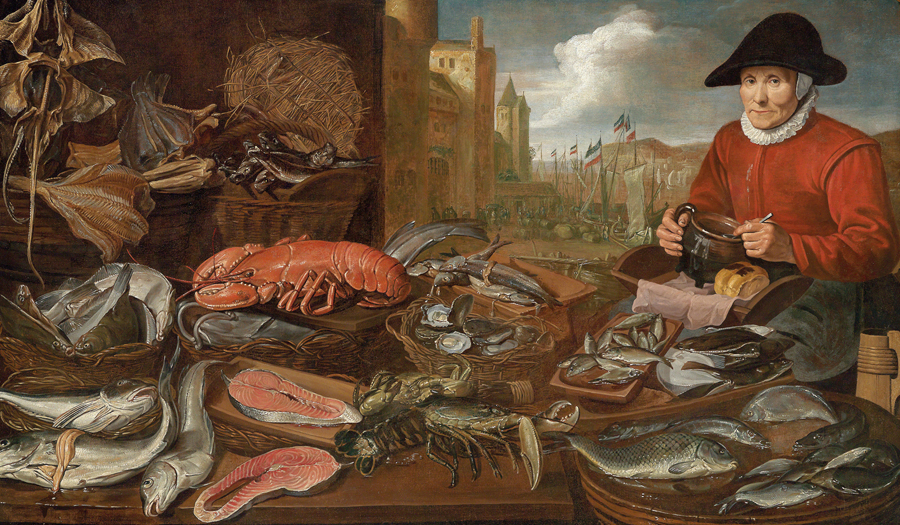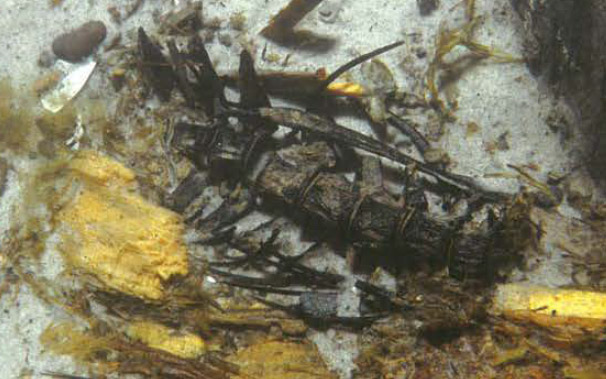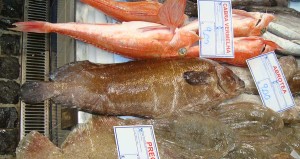berger, yslander, und hidlander vysch
Hans Christian Küchelmann, 27 November 2025

„berger, yslander, und hidlander vysch“. Zum hansischen Stockfischhandel
9th December 2025
Presentation by Hans Christian Küchelmann
within the lecture series „Handel, Geld und Politik“ (Trade, Money and Politics) of the
Hansemuseum Lübeck
Posted in: Announcements, General
twebackenbrot, Pökelfleisch und geschraubete Rodtschaer
Hans Christian Küchelmann, 14 November 2025

“twebackenbrot, Pökelfleisch und geschraubete Rodtschaer. Archäozoologische und historische Quellen zum Proviant auf Hanseschiffen”
Presentation of Hans Christian Küchelmann at the
Conference „Food Studies – Quo vadis? Interdisziplinäre Potenziale zur Erforschung einer Ernährungsgeschichte des Mittelalters“
13th to 14th of November 2025 at the University of Erfurt
Posted in: Announcements, General
Newspaper article: Reger Handel mit dem hohen Norden
Bart Holterman, 7 September 2017
Bart Holterman presentated the project and his own research on August 5 in Haus der Wissenschaft in Bremen. Matthias Holthaus was there as well and wrote the following article about it in the Weser Kurier of August 21, which gives a nice overview of the situation German merchants had to deal with when trading in the North Atlantic in the late Middle Ages (in German).
Posted in: Press
Project presentation at the 18th Meeting of the ICAZ Fish Remains Working Group (FRWG) in Lisbon
Hans Christian Küchelmann, 8 January 2016
 On the 30th of September I held a presentation at the 18th Meeting of the Fish Remains Working Group in Lisboa. The Fish Remains Working Group (FRWG) is a subject specific working group of the International Council for Archaeozoology (ICAZ), operating since 1980 with regular biennial research meetings and publications on archaeological fish remains. Its 18th meeting was entitled “Fishing through Time – Archaeoichthyology, Biodiversity, Ecology and Human Impact on Aquatic Environments” and was held in the Museu da Sociedade de Geografia de Lisboa from the 28th of September to the 3rd of October 2015. For further information on the programme of the conference see the book of abstracts.
On the 30th of September I held a presentation at the 18th Meeting of the Fish Remains Working Group in Lisboa. The Fish Remains Working Group (FRWG) is a subject specific working group of the International Council for Archaeozoology (ICAZ), operating since 1980 with regular biennial research meetings and publications on archaeological fish remains. Its 18th meeting was entitled “Fishing through Time – Archaeoichthyology, Biodiversity, Ecology and Human Impact on Aquatic Environments” and was held in the Museu da Sociedade de Geografia de Lisboa from the 28th of September to the 3rd of October 2015. For further information on the programme of the conference see the book of abstracts.
The theme of the conference fit perfectly to one of the research goals of our project, which I presented within the session “Multi-disciplinary Approaches to the Study of Fish Remains: Archaeology, written and illustrated Sources”. My presentation was entitled “Hanseatic trade in the North Atlantic: the archaeozoological evidence” and its main aim was to introduce our new research project to the archaeo-ichthyiological community, to inform about the historical background, to present an overview of the evidence accumulated so far, to show the potentials and limitations of the data, and to present preliminary results.
The conference was a fantastic opportunity to get in contact with colleagues working on related topics. For example Jennifer Harland or Rebeccca Nicholson, who are working on fish remains from medieval sites in Scotland and Orkney, James Barrett who analysed the fish bones from the wreck of the Mary Rose (AD 1545), Lembi Lougas who presented material from two hanseatic wrecks in Tallinn, and Jan Bakker, who prepared a poster on fish remains from the hanseatic city of Cologne. Most important was a meeting with James Barrett, head of the international project “The Medieval Origins of Commercial Sea Fishing”, based in Cambridge. We discussed the possibilities for future cooperation between the two projects.
Apart from the scientific part, the organisers provided a fantastic field trip, which included a visit to the fish market of Setubal.

A tusk (Brosme brosme) at the fish market of Setubal. The tusk is one of the species prepared as stockfish in the North Atlantic and traded by Hanseatic merchants, although not in large quantities. Remains have been found for instance in medieval Duisburg. Photo: Hans Christian Küchelmann
Posted in: Reports
The 14th International Symposium on Boat and Ship Archaeology in Gdańsk/Poland 21.-25. September 2015
Bart Holterman, 25 November 2015

Group photo in front of the medieval crane in Gdańsk made by Paweł Jóźwiak from the National Maritime Museum in Gdansk.
From September 21st until September 25th, I participated in the 14th International Symposium for Boat and Ship Archaeology (ISBSA 14) in Gdańsk, Poland. My contribution was a talk with the title: “Those bits and pieces from the Baltic shores – Evidence for medieval shipping along the German Baltic Sea coast”. Even though this topic seems to be a bit farfetched considering the topic of our project “Between the North Sea and the Norwegian Sea”, it bears an important insight into the principles of technical change in medieval and early modern shipbuilding. Moreover when dealing with the North Atlantic trade we face the problem of a lack of archaeological source material. There are several reasons for this situation. The wrecks we know today from the southern North Sea coast are found in the rivers or on land within towns. Here they are often better protected than in the open sea. Some wrecks, foremost in the Netherlands, were found in the Wadden Sea but this is quite rare and requires a certain level of sediment coverage of the site to protect the wreck from wood-degrading microorganisms. Therefore it is not easy to find wooden wrecks in the North Sea. Moreover, the conditions for archaeological documentation are difficult due to weather, tides and swell in the rather unprotected sea. At the destinations of trade in the North Atlantic, ship archaeology is in a very early stage, especially in Iceland. As a consequence we depend on material evidence from for example the Baltic Sea to construct a model of development in shipbuilding that might have influenced the North Atlantic trade of the merchants from Hamburg and Bremen.
The presentation at ISBSA 14 focused on development processes in medieval shipbuilding, which was based on tradition handed over from one generation to the next without the use of written documents, drawings or formulas. An important aspect of the examination was the possibility of changes in shipbuilding by technical transfer between different building methods, in particular between native and introduced methods. Due to the fact that only a very limited number of medieval ship finds along the German Baltic coast are properly documented, this study was mainly based on re-used ship timbers and fragments found in town excavations. Still these bits and pieces give enough technical data for comparative analyses.
The result of this research confirms that shipbuilding methods did not just change without reason. Similarly, technical transfer did not just take place because of the presence of ships built with a different method in the same waters. In fact, technical transfer seems to have been the last choice for changes within traditional building techniques in the medieval period. Changes appear to be alterations within traditional knowledge. The main reasons for changes are economical and aim for greater shipping capacities and rationalisation or simplification of the building process.
What does this mean for the project? Towards the end of the medieval period, the building of ships with flush outer planking appeared in northern Europe. It often has been assumed that the knowledge to build ships in this fashion was simply copied from foreign ships. Instead, the archaeological evidence points towards a development or self-invention of flush-planked carvel-built vessels from within the building traditions of the clinker or Kollerup-Bremen Type building methods. Could these changes, that took place in the second half of the 15th century, have been decisive for the German merchants’ choice to sail the North Atlantic to trade?
The results will be published in the Symposiums proceedings.
Posted in: Reports
